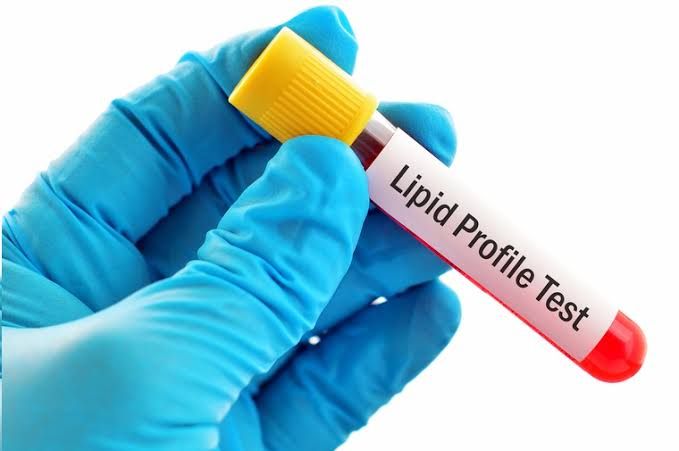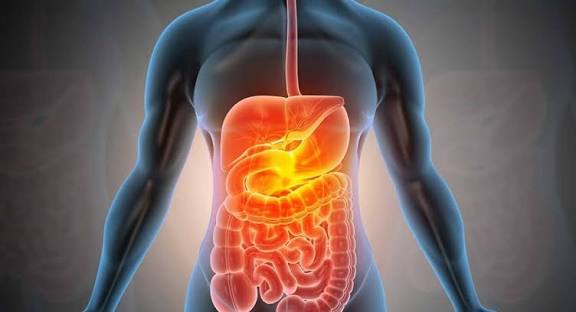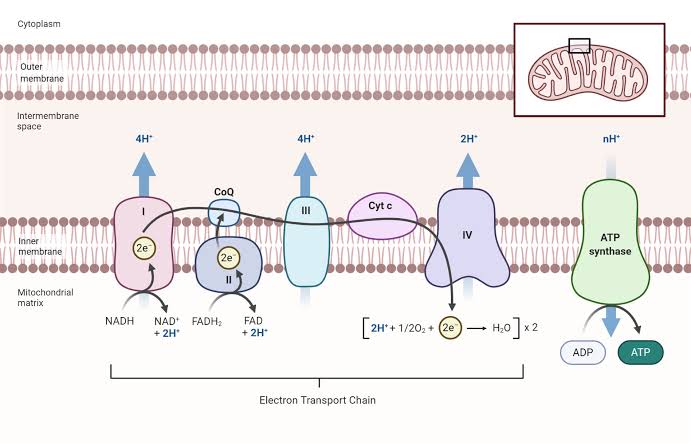
The lipid profile, a crucial blood test, offers a comprehensive snapshot of the fats (lipids) circulating in an individual’s bloodstream. These lipids, including cholesterol and triglycerides, are vital for various bodily functions, such as hormone production, cell membrane integrity, and energy storage. However, an imbalance in their levels, known as dyslipidemia, is a primary modifiable risk factor for atherosclerotic cardiovascular disease (ASCVD), a leading cause of morbidity and mortality worldwide. Understanding the components of a lipid profile and how to interpret their values is fundamental for health professionals and individuals keen on proactive disease prevention.
Components of a Lipid Profile
A standard lipid panel typically measures four key metrics, often requiring a 9-12 hour fast to ensure accurate triglyceride levels:
- Total Cholesterol (TC): The sum of all cholesterol in the blood.
- Low-Density Lipoprotein Cholesterol (LDL-C): Often referred to as “bad” cholesterol.
- High-Density Lipoprotein Cholesterol (HDL-C): Frequently called “good” cholesterol.
- Triglycerides (TG): A type of fat used for energy or stored as body fat.
Beyond these primary measures, clinicians may also calculate Non-HDL Cholesterol and Very Low-Density Lipoprotein Cholesterol (VLDL-C) to gain further insights into cardiovascular risk.
Detailed Interpretation of Each Lipid Component
1. Total Cholesterol (TC)
Total cholesterol represents the cumulative amount of cholesterol carried by all lipoprotein particles in the blood. While it provides an initial overview, its clinical utility is limited without considering its individual components.
- Optimal: Less than 200 mg/dL (5.2 mmol/L)
- Borderline High: 200-239 mg/dL (5.2-6.2 mmol/L)
- High: 240 mg/dL (6.2 mmol/L) or greater
Significance: A high total cholesterol level suggests an increased risk for cardiovascular disease. However, this value alone cannot differentiate between the contributions of “good” and “bad” cholesterol, necessitating a breakdown into its constituent parts for a more nuanced risk assessment. Low total cholesterol is rare and usually not a concern unless it’s extremely low due to specific genetic disorders or severe malabsorption, which can lead to other health issues.
2. Low-Density Lipoprotein Cholesterol (LDL-C) – The Primary Driver of Atherosclerosis
LDL-C is the most crucial lipid parameter in assessing cardiovascular risk. LDL particles transport cholesterol from the liver to cells throughout the body. When LDL-C levels are high, these particles can accumulate in the walls of arteries, leading to the formation of plaque, a process known as atherosclerosis. This hardening and narrowing of arteries can eventually lead to heart attacks, strokes, and peripheral artery disease.
- Optimal (for low-risk individuals): Less than 100 mg/dL (2.6 mmol/L)
- Near Optimal/Above Optimal: 100-129 mg/dL (2.6-3.3 mmol/L)
- Borderline High: 130-159 mg/dL (3.4-4.1 mmol/L)
- High: 160-189 mg/dL (4.1-4.9 mmol/L)
- Very High: 190 mg/dL (4.9 mmol/L) or greater (often indicates genetic predispositions like familial hypercholesterolemia)
Significance: Higher LDL-C levels are directly correlated with an increased risk of ASCVD. Current guidelines often dictate LDL-C targets based on an individual’s overall ASCVD risk. For instance, individuals with established ASCVD may have an LDL-C target of less than 70 mg/dL (1.8 mmol/L), while very high-risk patients might aim for less than 55 mg/dL (1.4 mmol/L). Elevated LDL-C often results from a combination of genetic factors, diets high in saturated and trans fats, lack of physical activity, and secondary causes like hypothyroidism or kidney disease. Management strategies focus on intensive lifestyle modifications and, frequently, statin therapy. Very low LDL-C, while generally protective, can occur in rare genetic disorders but is usually not a concern from preventive cardiology perspective.
3. High-Density Lipoprotein Cholesterol (HDL-C) – The Protective Factor
HDL particles are often referred to as “good” cholesterol because they help remove excess cholesterol from arterial walls and transport it back to the liver for excretion (a process known as reverse cholesterol transport). Higher levels of HDL-C are generally associated with a lower risk of ASCVD.
- Low (High Risk): Less than 40 mg/dL (1.0 mmol/L) for men; Less than 50 mg/dL (1.3 mmol/L) for women
- Acceptable: 40-59 mg/dL (1.0-1.5 mmol/L) for men; 50-59 mg/dL (1.3-1.5 mmol/L) for women
- Optimal (Protective): 60 mg/dL (1.5 mmol/L) or greater
Significance: Low HDL-C levels are an independent risk factor for ASCVD. Factors contributing to low HDL-C include lack of exercise, obesity, smoking, diabetes, and certain genetic predispositions. While lifestyle changes (e.g., increased physical activity, weight loss, smoking cessation, moderate alcohol intake) can modestly increase HDL-C, pharmacologic interventions specifically to raise HDL-C have not consistently demonstrated ASCVD benefit in clinical trials. High HDL-C is generally considered protective, though extremely high levels (above 90 mg/dL) may rarely be associated with an increased risk in some populations, a phenomenon still under investigation.
4. Triglycerides (TG)
Triglycerides are the most common type of fat in the body. They store unused calories and provide energy. Elevated levels of triglycerides can be a significant health concern, particularly when very high.
- Optimal: Less than 150 mg/dL (1.7 mmol/L)
- Borderline High: 150-199 mg/dL (1.7-2.2 mmol/L)
- High: 200-499 mg/dL (2.3-5.6 mmol/L)
- Very High: 500 mg/dL (5.6 mmol/L) or greater
Significance: High triglyceride levels are linked to an increased risk of ASCVD, especially when combined with low HDL-C and high LDL-C. Very high triglyceride levels (above 500 mg/dL) pose an immediate risk for acute pancreatitis, a severe inflammation of the pancreas. Common causes of elevated triglycerides include diets high in refined carbohydrates and sugars, excessive alcohol consumption, obesity, uncontrolled diabetes, hypothyroidism, kidney disease, and certain medications (e.g., corticosteroids, estrogens). Fasting is critical for accurate triglyceride measurement, as recent meals can significantly elevate levels. Management involves lifestyle modifications (dietary changes, weight loss, exercise, alcohol reduction) and, if necessary, medications like fibrates or high-dose omega-3 fatty acids.
5. Non-HDL Cholesterol (Non-HDL-C)
Non-HDL-C is calculated by subtracting HDL-C from Total Cholesterol (TC – HDL-C). It represents the total amount of cholesterol carried by all “atherogenic” (plaque-forming) lipoproteins, including LDL, VLDL, and intermediate-density lipoprotein (IDL).
- Optimal: Less than 130 mg/dL (3.4 mmol/L)
- High Risk: Above 160 mg/dL (4.1 mmol/L)
Significance: Non-HDL-C is considered by many experts to be a more comprehensive predictor of ASCVD risk than LDL-C alone, particularly for individuals with high triglycerides, diabetes, or metabolic syndrome, where LDL-C may be an underestimation of total atherogenic particle burden. It does not require fasting and directly reflects the cholesterol content of all lipoproteins that contribute to atherosclerosis.
6. Very Low-Density Lipoprotein Cholesterol (VLDL-C)
VLDL particles are primarily responsible for transporting triglycerides synthesized in the liver to peripheral tissues. VLDL-C is often estimated as one-fifth of the triglyceride value when triglycerides are below 400 mg/dL (e.g., VLDL-C = Triglycerides / 5).
Significance: Elevated VLDL-C reflects increased triglyceride-rich particle burden and is associated with increased cardiovascular risk. It typically rises and falls in parallel with triglyceride levels.
Holistic Interpretation and Risk Stratification
Interpreting a lipid profile goes beyond simply looking at individual numbers. A holistic approach considers the entire profile in the context of an individual’s overall cardiovascular risk factors. These include:
- Age and Sex: Risk generally increases with age, and there are sex-specific differences.
- Family History: A strong family history of premature ASCVD significantly elevates risk.
- Smoking Status: Smoking is a major independent risk factor.
- Hypertension (High Blood Pressure): Coexisting hypertension dramatically increases ASCVD risk.
- Diabetes Mellitus: Diabetes is considered an ASCVD risk equivalent.
- Obesity and Metabolic Syndrome: These conditions often lead to dyslipidemia.
- Presence of Existing ASCVD: Individuals with a history of heart attack, stroke, or peripheral artery disease are at the highest risk for recurrent events.
Clinicians use risk assessment tools, such as the American College of Cardiology/American Heart Association (ACC/AHA) Pooled Cohort Equations, to estimate an individual’s 10-year and lifetime risk of ASCVD. These tools integrate lipid values with other risk factors to guide treatment decisions. For example, a young, otherwise healthy individual with slightly elevated LDL-C might be advised on lifestyle changes, whereas an older individual with diabetes and the same LDL-C might require immediate pharmacotherapy.
Factors Influencing Lipid Levels
Various factors can significantly impact an individual’s lipid profile:
- Diet: High intake of saturated fats, trans fats, and dietary cholesterol can raise LDL-C. High intake of refined carbohydrates and sugars can elevate triglycerides.
- Physical Activity: Regular exercise helps lower LDL-C, raise HDL-C, and lower triglycerides.
- Weight: Obesity, particularly central obesity, is associated with higher LDL-C, lower HDL-C, and higher triglycerides.
- Genetics: Genetic predispositions (e.g., familial hypercholesterolemia) can lead to profoundly high lipid levels irrespective of lifestyle.
- Medications: Certain drugs, such as corticosteroids, beta-blockers, oral contraceptives, and some diuretics, can adversely affect lipid levels.
- Underlying Medical Conditions: Hypothyroidism, kidney disease, liver disease, diabetes, and metabolic syndrome can all lead to dyslipidemia.
- Fasting Status: Non-fasting samples can show falsely elevated triglyceride levels, potentially affecting VLDL-C calculations and non-HDL-C interpretation.
Clinical Significance and Management Implications
The clinical significance of a lipid profile extends far beyond simple diagnosis; it serves as a cornerstone for:
- Early Detection of Cardiovascular Risk: Identifying dyslipidemia allows for timely intervention before significant arterial damage occurs.
- Guiding Therapeutic Interventions: Based on the lipid profile and overall risk assessment, clinicians can recommend personalized strategies. These range from intensive lifestyle modifications (dietary changes, regular exercise, weight management, smoking cessation) to pharmacotherapy.
- Statins: The cornerstone of lipid-lowering therapy, primarily reducing LDL-C.
- Ezetimibe: Inhibits cholesterol absorption in the intestine, often used in combination with statins.
- PCSK9 Inhibitors: Potent LDL-C lowering agents for very high-risk patients or those with familial hypercholesterolemia.
- Fibrates: Primarily used to lower very high triglycerides.
- Omega-3 Fatty Acids (prescription grade): Can significantly lower high triglycerides.
- Niacin (Nicotinic Acid): Can lower LDL-C and triglycerides and raise HDL-C, though its ASCVD benefit is less clear than statins.
- Monitoring Treatment Effectiveness: Regular lipid profile measurements help assess the efficacy of lifestyle changes and medications, allowing for dose adjustments or changes in therapeutic strategy.
- Prevention of Major Adverse Cardiovascular Events (MACE): By effectively managing dyslipidemia, the risk of heart attacks, strokes, and other ASCVD manifestations can be substantially reduced.
Conclusion
The interpretation of a lipid profile is a vital step in cardiovascular risk assessment and management. It provides critical insights into an individual’s lipid metabolism, highlighting potential areas of concern that, if left unaddressed, can culminate in debilitating and life-threatening ASCVD. While understanding the individual components like Total Cholesterol, LDL-C, HDL-C, and Triglycerides is essential, it is the holistic interpretation within the context of an individual’s complete clinical picture and other risk factors that truly unlocks its diagnostic and prognostic power. Regular screening, coupled with personalized medical advice and adherence to evidence-based guidelines, empowers both clinicians and patients to proactively manage dyslipidemia, promoting long-term cardiovascular health and improving overall quality of life.
References
- Grundy, S. M., et al. (2019). 2018 AHA/ACC/AACVPR/AAPA/ABC/ACPM/ADA/AGS/APhA/ASPC/NLA/PCNA Guideline on the Management of Blood Cholesterol: A Report of the American College of Cardiology/American Heart Association Task Force on Clinical Practice Guidelines. Journal of the American College of Cardiology, 73(24), e285-e350.
- National Cholesterol Education Program (NCEP) Expert Panel on Detection, Evaluation, and Treatment of High Blood Cholesterol in Adults (Adult Treatment Panel III). (2002). Third Report of the National Cholesterol Education Program (NCEP) Expert Panel on Detection, Evaluation, and Treatment of High Blood Cholesterol in Adults (Adult Treatment Panel III) Final Report. Circulation, 106(25), 3143-3421.
- Mach, F., et al. (2020). 2019 ESC/EAS Guidelines for the management of dyslipidaemias: lipid modification to reduce cardiovascular risk. European Heart Journal, 41(1), 111–188.
- Sniderman, A. D., et al. (2011). Why ApoB is superior to LDL cholesterol as a measure of atherosclerotic risk. European Heart Journal, 32(15), 1819-1824.
- Centers for Disease Control and Prevention (CDC). (2023). High Cholesterol Facts. Available at: https://www.cdc.gov/cholesterol/facts.htm (Accessed specific date)
- American Heart Association (AHA). (2023). About Cholesterol. Available at: https://www.heart.org/en/health-topics/cholesterol/about-cholesterol (Accessed specific date)







